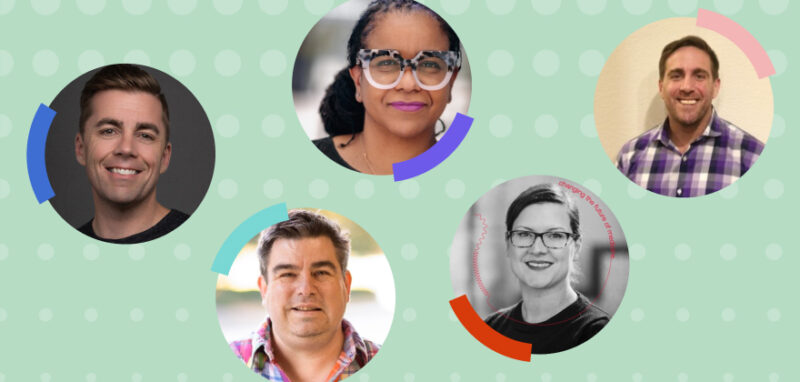
Why a Sustainable Talent Acquisition Strategy is Critical for Employers Now
Is your current talent acquisition strategy a sustainable one? In recent years, the labor market has been increasingly candidate driven and focused on skill-based hiring. But with rising inflation, HR and talent leaders are under pressure to reduce hiring costs while maintaining efficiency.
There’s no doubt it’s a complicated space to be in – candidates are demanding higher wages, re-hire costs are significant, and upskilling investments are inevitable. So, how can you survive the transition without losing touch with your candidates? By adopting a sustainable approach to talent acquisition.
While organizations are moving toward more sustainable talent strategies during the economic slowdown, they can often confuse talent acquisition with recruitment. This lack of knowledge can hamper your process and disrupt progress.
Related: Hired Releases 2023 State of Software Engineers Report
Recruitment vs. Talent AcquisitionTalent acquisition (TA) is an ongoing process to identify suitable candidates aligned with the company’s values, mission, and business goals. It is an ever-evolving process with a focus on current market trends, workforce makeup, and recruitment predictions.
Developing and maintaining a talent acquisition strategy allows you to stay ahead of the competition, empower your bottom line, and acquire top talent.
While talent acquisition and recruitment are often used interchangeably, they are two distinct processes. Although both deal with talent, recruiting is the process of sourcing, assessing, and hiring candidates in the short term. Recruitment often happens when there are open positions in the organization.
So, it includes the process of attracting quality job applicants, analyzing their qualities and skills, and hiring them for vacant roles. The recruitment process is time-bound, pre-defined, and standard compared to talent acquisition.
On the other hand, talent acquisition is a more insightful process based on long-term business and talent goals. The purpose of a TA strategy is to seek candidates who are the right fit and have the potential to contribute meaningfully to the future of the organization. TA experts and specialists are more concerned with laying the appropriate groundwork to hire the best talent long-term.
What is a “sustainable talent acquisition strategy”?Talent sustainability is defined as an organization’s ability to continuously attract, develop, and retain candidates with the skills and qualities required for current or future roles. In a swiftly changing labor market, organizational needs and goals also change respectively. A one-time recruitment plan would be inept at meeting the evolving demands of the company.
A sustainable talent acquisition strategy also encourages you to maintain a balance between acquiring external and promoting internal talent. Lack of career advancement opportunities is one of the main reasons people quit their jobs.
Although hiring new talent is important, doing so at the cost of current employees is detrimental to organizational growth. Moreover, if you are delegating all resources and money towards recruitment, there’s none left to invest in your existing employees.
Hence, a sustainable strategy is a win for all – companies can divide time and resources between current employees and new hiring with proper planning and implementation.
Getting started
While recruiting is essential for gaining employees, it can become a time-intensive and expensive endeavor without a proper TA strategy. Amidst a dynamic labor market, many organizations are exploring talent acquisition avenues to prepare for hiring surges and talent management.
If you are one of those companies ready to move into the TA field, ask yourself the following questions before jumping to strategy:
- What are your long-term vision and goals for your organization?
- What type of talent do you need to achieve the company’s vision and goals?
- How can you integrate your organizational values into the talent acquisition process?
- How do you create a program framework to support your talent acquisition strategy?
- How will you assess the progress of your talent acquisition strategy?
Your answers will help you define and align your business goals to the talent strategy.
Why you need itFinding the right talent in the tech industry is a struggle for organizations worldwide. This year, a long-standing skills gap and a lack of professionals in the market have put things in perspective.
In simple terms, a talent acquisition strategy saves time and money, boosts productivity, and prepares you for the market’s dips and surges. Time-specific recruitment periods force you to hire and onboard candidates quickly. Doing so is expensive, and may disrupt workflow and productivity.
As some organizations prepare for the possibility of a recession, many are also reducing their hiring budgets and rolling back their hiring plans. However, not having comprehensive long-term talent acquisition strategies leave organizations vulnerable when they do need to start hiring again.
Moving away from the mindset of recruiting being a one-and-done deal, and creating a more sustainable talent acquisition strategy framework is crucial.
Sustainability is keyHiring new candidates is often time-consuming and costly, especially if done repeatedly. This is where sustainable talent acquisition comes in.
A solid talent acquisition strategy allows you to future-proof your organization by investing in nurturing, hiring, upskilling, and retaining highly qualified tech talent.
Amidst some new (and old) challenges, one thing remains constant – data-driven and long-term talent acquisition and management frameworks are here to stay.
If you’re ready to develop your sustainable talent acquisition strategy, Hired is here to help! See how it works for employers with a demo and set up a trial.Updated 25 July 2023
Related blog posts

Top 3 Strategies to Nurture Your Tech & Sales Candidate Pipeline
In the wake of the economic downturn and slow labor market, companies are focusing on talent...

Want a High-Performing Talent Pipeline & Sustainable Talent Acquisition? (5 Steps)
Talent acquisition isn’t easy in the current job market. Companies cannot afford to post a...

Hiring Tech Talent is Tough. Here’s Why (and What to Do About it)
Pandemics change things. They are the cultural equivalent of an apocalypse, and while we can...

How to Build a Sustainable Tech Talent Acquisition Strategy: A Comprehensive Guide
About this eBook Do you know anyone who’s used “talent acquisition”...

What Happens When TA & Hiring Managers Unite? Best Practices from One Medical, NBCUniversal & More
Strategies for SMB, MM & Enterprise About the eBook: A common thread we’ve...

Talent Acquisition Week Edition: Talk Talent to Me Feb ’23 Recap
Catch up on the February 2023 episodes of Hired’s Talk Talent to Me podcast featuring...

